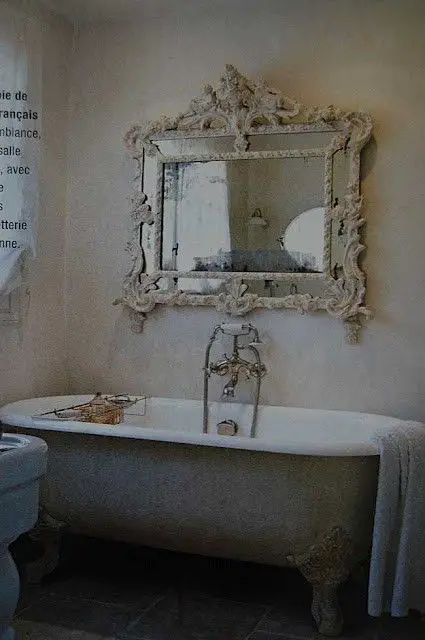27 Different Types Of Walls And What Theyre Used For (With Pictures)
Walls come in a wide range of types, each designed to serve a specific purpose. From load-bearing structures to non-load bearing walls, the variety is extensive. Materials used to construct walls include wood, concrete, brick, and more, with each material boasting its own set of advantages and disadvantages. In this article, we’ll delve into some of the most common types of walls, exploring their unique characteristics and uses.
Load-bearing walls include precast concrete walls, retaining walls, masonry walls, pre-panelized load-bearing metal stud walls, engineering brick walls, and stone walls. Non-load bearing walls, on the other hand, encompass hollow concrete blocks, facade bricks, hollow bricks, and more.
Other notable types of walls include brick walls, boundary walls, cavity walls, cinder block walls, core walls, faced walls, glass walls, panel walls, parapet walls, partition walls, plywood walls, reinforced brick walls, rubble stone masonry walls, shear walls, steel sheet walls, veneered walls, and wood walls. The diversity of wall types is a testament to the ingenuity of architects and builders.
Load Bearing Walls.
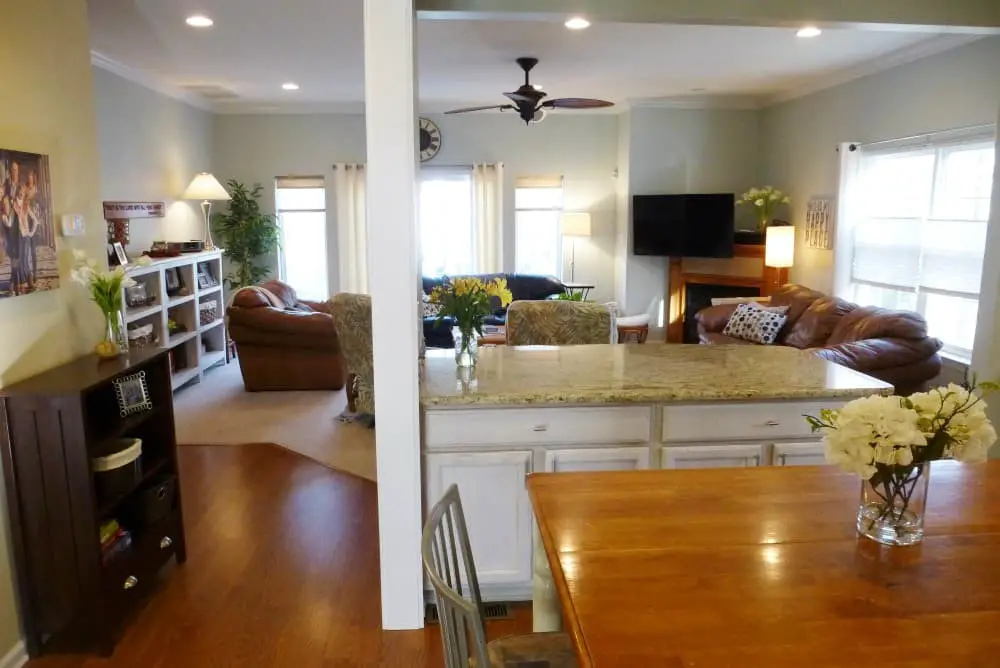
In any given house, there exist walls that play a crucial role in supporting various loads, including those from the roof, upper floors, ceilings, and even furniture and people. These load-bearing walls can be found along the perimeter of most houses, providing essential support to the roof and upper levels.
However, not all interior walls are equally important; some might be mere partitions, while others bear the weight of floors and ceilings above them, often located in the center of the house. When determining whether a wall is load-bearing, several factors come into play. The size of the house is one consideration – larger homes typically require more load-bearing walls than smaller ones.
Additionally, the type of construction also matters; brick or stone houses tend to have more load-bearing walls compared to frame-built structures. Finally, the location of the wall itself is significant – those situated in the center of a room are more likely to be load-bearing, whereas those on outside corners typically aren’t. Load-bearing walls have both advantages and disadvantages. On the plus side, they provide vital support and stability to a house.
However, if these walls become damaged, repairs can be challenging and costly. Older homes often feature load-bearing walls constructed from materials like brick or stone, designed to withstand the weight of structures above them. Typically, such walls are located in basements or on the first floor of a home.
Precast Concrete Wall.
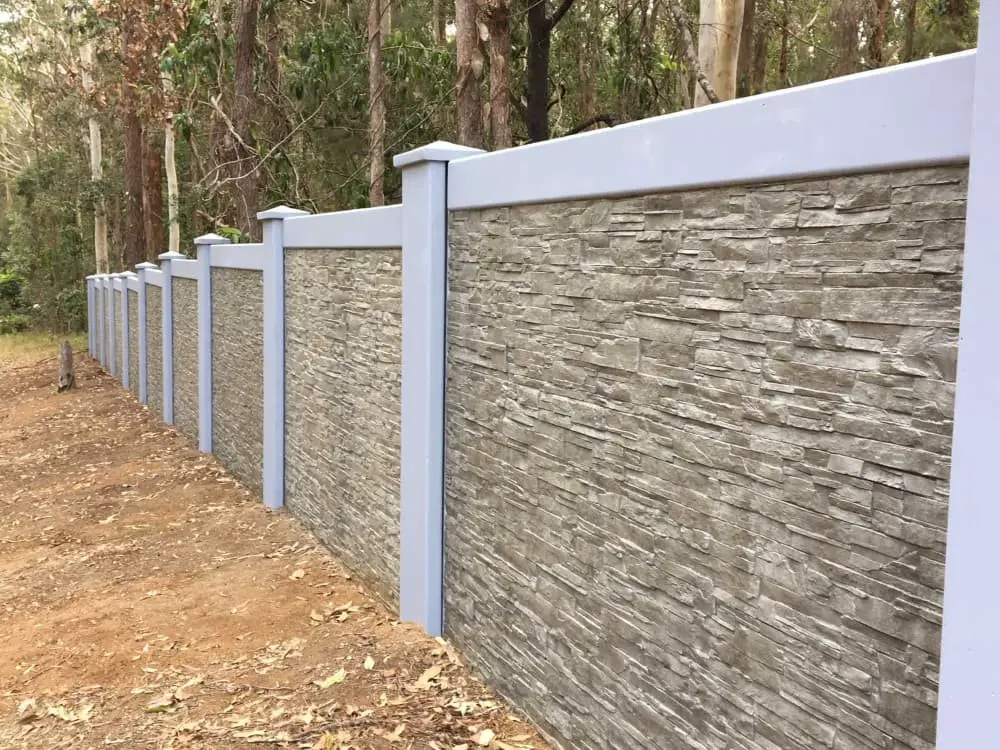
Precast concrete walls offer a unique combination of strength, durability, and affordability. By casting concrete in a mold made from wood, metal, or plastic, manufacturers can create sturdy structures that can withstand the test of time. The two-piece design, with separate bottom and top sections, allows for easy assembly on-site. This versatility also enables precast concrete walls to be molded into any shape or size, and even finished to mimic stone, brick, or wood textures.
With a lifespan that can span decades, it’s no wonder these structures have become a popular choice for builders. While precast concrete walls boast many advantages – including low maintenance, excellent soundproofing, and fire resistance – they do come with some drawbacks. The upfront cost may be higher than other materials, and the aesthetic appeal may not suit every project. Ultimately, the decision to use precast concrete walls relies on carefully weighing these pros and cons.
Retaining Wall.

When it comes to supporting the soil behind them, retaining walls play a crucial role. Typically constructed from concrete, stone, or brick, these structures serve as a bulwark against erosion. A well-engineered retaining wall can stand the test of time, but one that’s hastily built can lead to serious damage to your property. Before embarking on a retaining wall project, it’s essential to consider several key factors.
Firstly, you need to ensure the wall is tall enough to effectively support the weight of soil it will be holding back. Secondly, you must select materials that can withstand the force exerted by the soil. Finally, a solid foundation is vital for the wall’s stability. The benefits of retaining walls include their ability to prevent soil erosion and even serve as an aesthetic feature in your yard.
On the other hand, these structures can be costly to build and maintain, and if not constructed with care, they may pose a safety risk.
Masonry Wall.
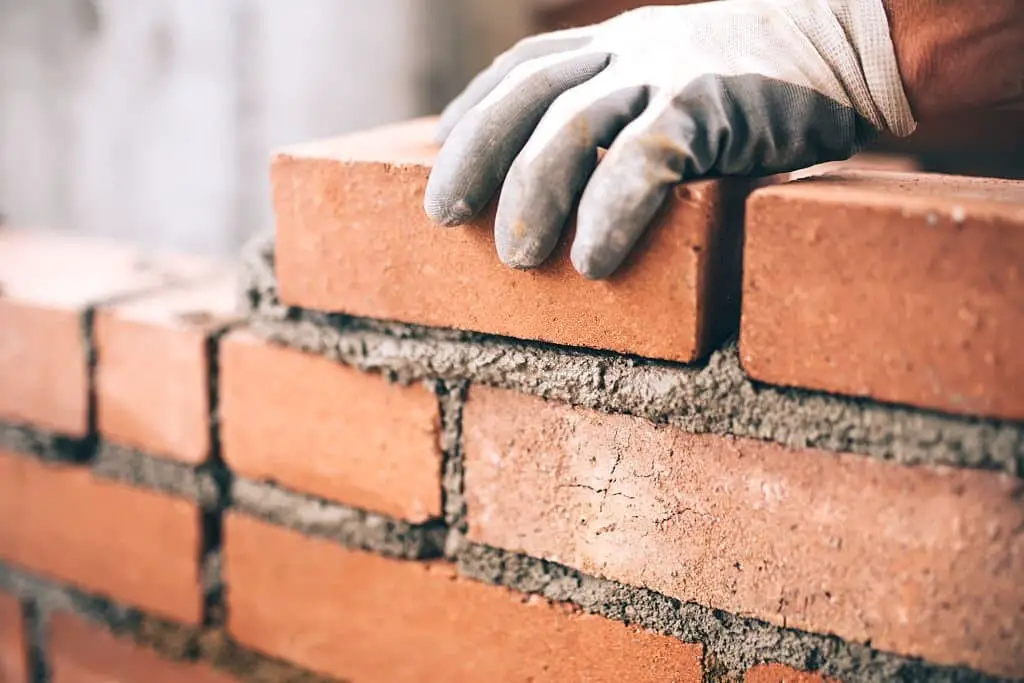
Masonry walls, constructed from bricks or stones, are a popular choice globally. These robust structures can last for centuries if built correctly, boasting remarkable durability and resistance to fire and termites. The versatility of masonry walls is reflected in their various types, including brick walls made from laid-in-mortar bricks, which can be load-bearing or non-load-bearing. Stone walls, typically crafted from granite, limestone, or sandstone, offer an alternative option.
Masonry walls can take on a solid or hollow form, with the former comprising solid bricks or stones and the latter featuring two layers of material with an empty space in between. Their configurations can also be straight or curved, lending an interesting design element to structures. Some masonry walls are plain, while others feature decorative carvings or differently colored bricks.
Masonry walls often serve as external features, but they can also be internal, creating unique design elements within buildings. The benefits of masonry walls include their centuries-long durability, low maintenance requirements, and ability to withstand wear and tear. However, these structures can be costly to construct, heavy, and have poor thermal insulation, making them prone to cold winters and hot summers.
Pre Panelized Load Bearing Metal Stud Walls.
Pre-panelized load-bearing metal stud walls are a type of construction that has gained popularity in commercial and industrial settings due to their exceptional strength and durability. These walls are composed of panels connected to metal studs, which provide the necessary support for the weight of the wall. The unique design allows for two layers of metal studs, with the outer layer serving as the structural foundation and the inner layer acting as the finish layer.
The lighter gauge metal used in the finish layer distinguishes it from the heavier gauge metal utilized in the structural layer.
The benefits of employing pre-panelized load-bearing metal stud walls are multifaceted. They boast superior strength and durability compared to traditional walls, making them an ideal choice for high-traffic areas. Additionally, these walls are relatively easy to install, requiring less time and labor.
Furthermore, they exhibit enhanced resistance to moisture damage and fire, reducing the risk of structural compromise or damage.
Engineering Brick Wall.
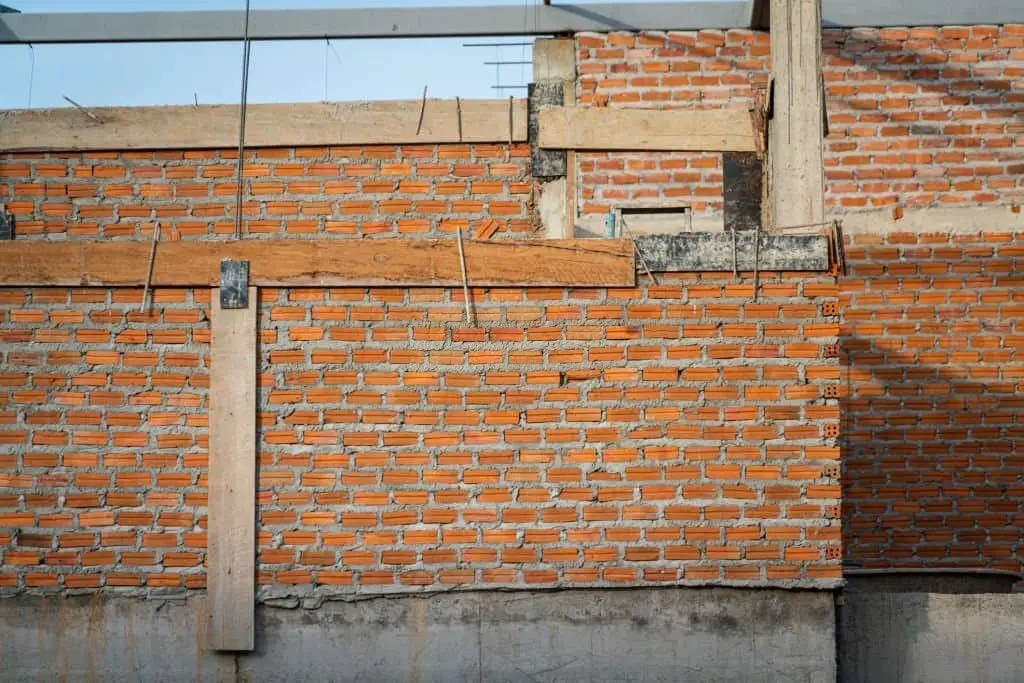
Engineering brick walls are a type of wall constructed using bricks laid in a herringbone pattern. These walls serve as structural support or act as retaining walls for various structures. Their applications also extend to fireplaces and chimneys. When building an engineering brick wall, it’s crucial to select the correct type of brick, as different types vary in strength and durability.
The most common type used is the clay brick, which is created by mixing clay, sand, and water, then firing it at high temperatures in a kiln. Clay bricks are robust and durable but may be susceptible to damage from freeze-thaw cycles. Concrete bricks, another option for engineering brick walls, combine cement, sand, aggregate, and water, followed by curing in a kiln or autoclave. They offer increased strength and durability compared to clay bricks at a higher cost.
Brick walls can be embellished with varied mortar joints of different colors, using materials such as Portland cement, lime, and sand. While engineering brick walls have their benefits, they also come with drawbacks. On the positive side, they are long-lasting when properly maintained, and their low-maintenance nature is an advantage. However, installation can be costly, and professional assistance may be necessary.
Stone Wall.
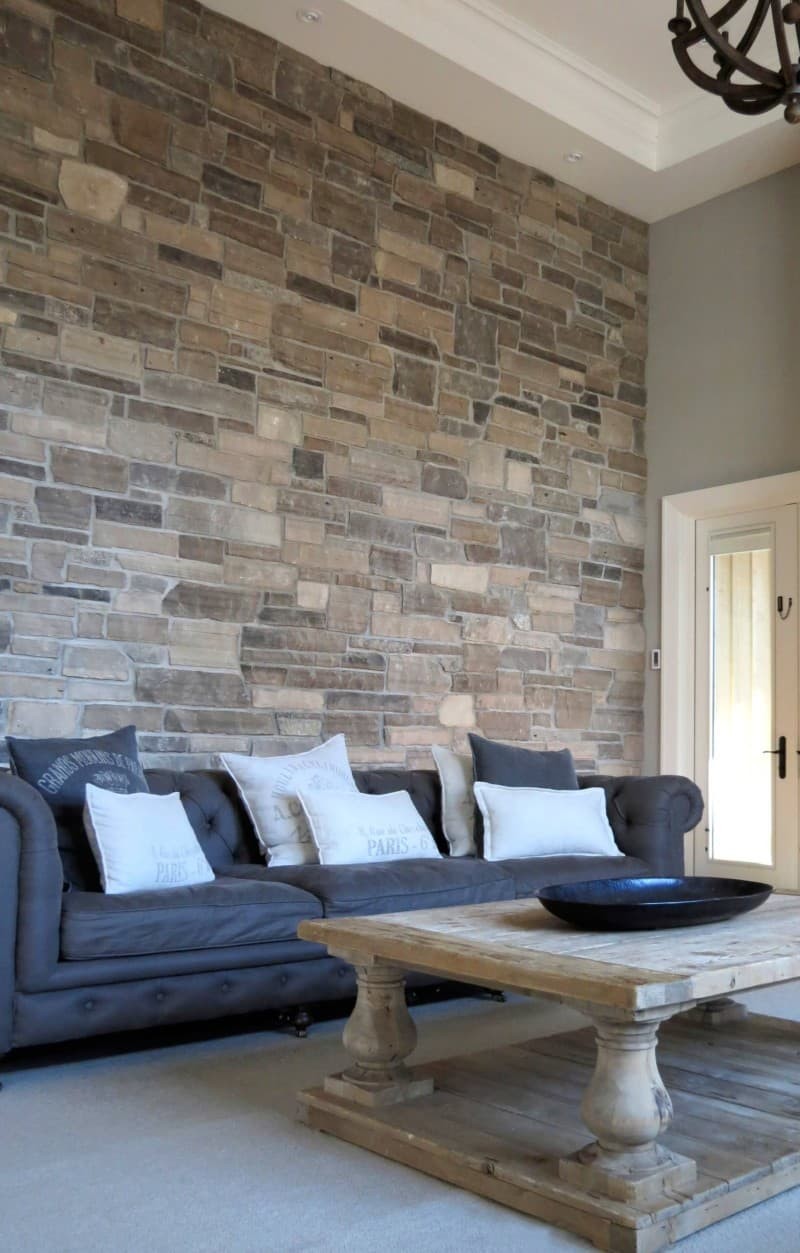
A stone wall, constructed without mortar, serves as a timeless and elegant barrier or feature in various settings. Its applications range from defining property boundaries to creating serene garden escapes or screening areas for privacy. The versatility of stone walls stems from the variety of materials used, including granite, limestone, sandstone, and slate. However, building such a structure demands meticulous planning, execution, and manual labor.
To initiate the process, stones must be gathered, sorted by size and shape, and then carefully arranged to create the desired design. The foundation of the wall is laid first, with each subsequent layer built upon the previous one, working from the base to the top. Despite being a labor-intensive task, the end result is a breathtakingly unique feature that can elevate any landscape’s aesthetic appeal.
For those contemplating this project, consulting a professional landscaper or masonry contractor is highly recommended to ensure a successful outcome.
The advantages and disadvantages of stone walls are equally noteworthy. On one hand, they can become a stunning focal point in your outdoor space, potentially increasing your property’s value.
On the other hand, their construction may prove costly and time-consuming, while ongoing maintenance tasks, such as cleaning and sealing, are necessary to preserve their appearance.
Non-Load Bearing Wall.
Non-load bearing walls are a crucial aspect of building design, often found in the middle of rooms or separating spaces. Unlike their load-bearing counterparts, these walls don’t support any weight from above, rendering them non-structural and easily removable without compromising the stability of a building. Typically constructed using wood frame techniques with gypsum board (drywall) on both sides, non-load bearing walls rely on top and bottom plates to which wall studs are attached.
The plates themselves are secured to floor joists or ceiling joists via nails or screws. One significant advantage of non-load bearing walls is their ease of removal, making them ideal for remodeling projects where demolition is necessary. Moreover, they can be constructed using lighter materials due to the lack of weight-bearing requirements.
However, this also means that these walls are more prone to damage from high winds or earthquakes, as they aren’t equipped with the same level of structural integrity as load-bearing walls. While non-load bearing walls offer convenience and flexibility in design, their construction must be meticulous to ensure stability. Improperly built walls can collapse, especially if made from lightweight materials.
Ultimately, a thorough understanding of these walls’ characteristics is essential for effective building design and renovation.
Hollow Concrete Block.
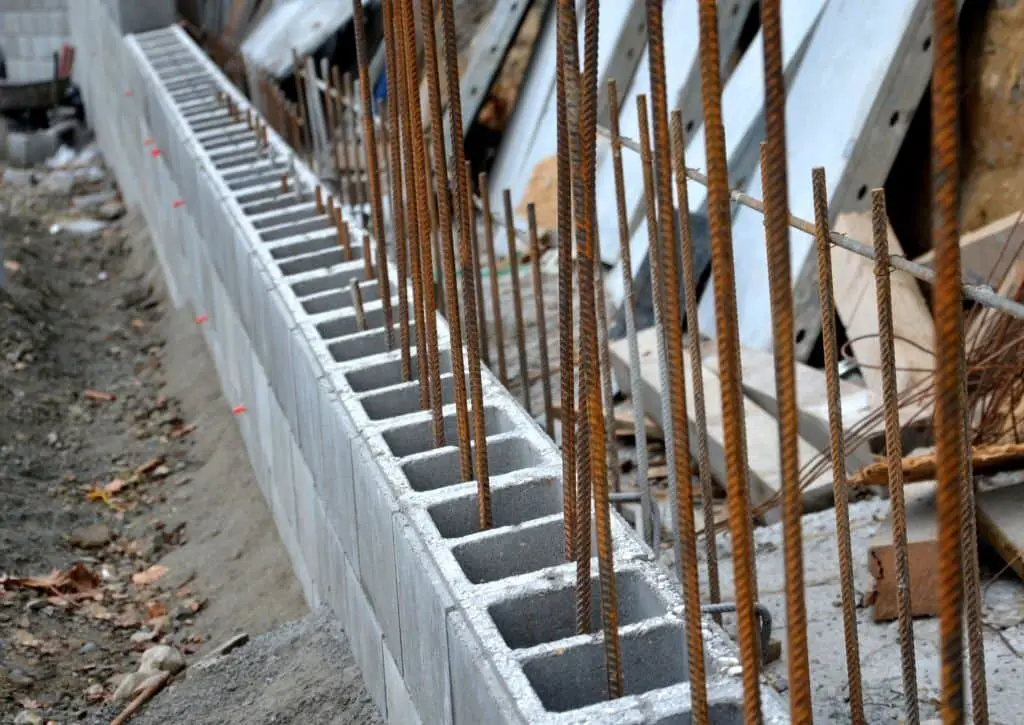
Hollow concrete blocks are a type of masonry material characterized by a central void, often employed in the construction of walls, partitions, and structural elements. The primary benefit of hollow concrete blocks relative to their solid counterparts is their significantly reduced weight and enhanced workability. Moreover, they exhibit superior thermal insulation properties, making them an attractive option for energy-efficient building projects.
In terms of advantages, hollow concrete blocks are not only more affordable than solid concrete but also easier to manipulate on-site due to their lighter nature. Additionally, they demonstrate impressive soundproofing capabilities. However, there are some notable drawbacks to consider. While hollow concrete blocks may lack the structural integrity of their solid counterparts, they can be more challenging to lay correctly and may be more prone to moisture-related damage.
Facade Bricks.
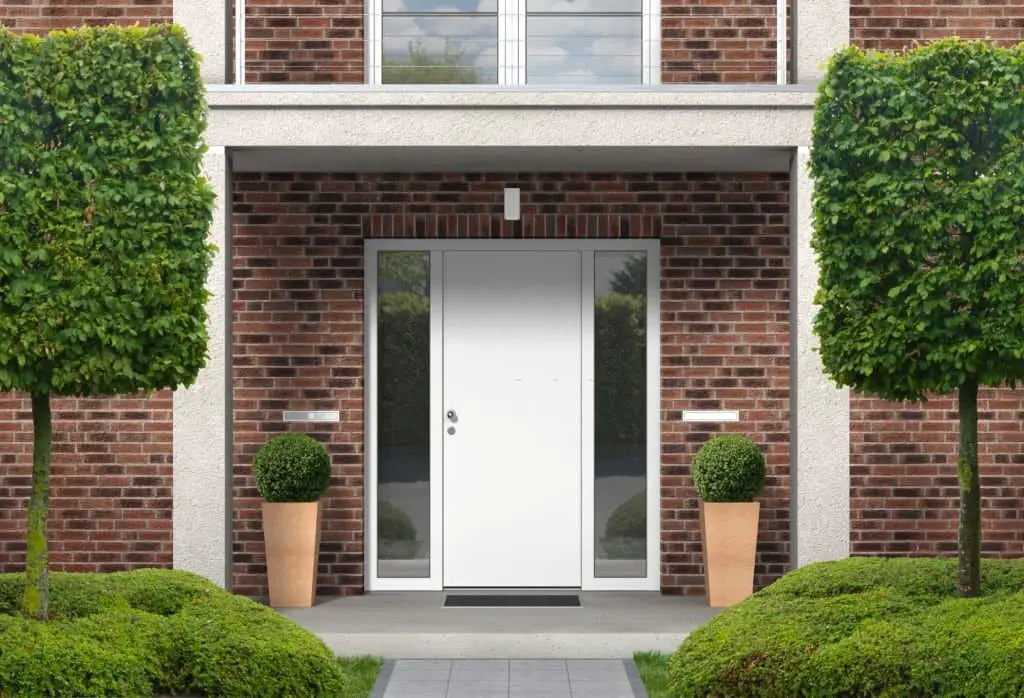
Facade brick is a popular choice for exterior cladding due to its durability and versatility. Unlike regular bricks, facade bricks are often larger in size and fired at higher temperatures to enhance their strength. This results in a material that can withstand the elements with minimal maintenance. One of the key benefits of using facade brick is its aesthetic appeal.
The material is available in a range of colors and textures, allowing designers to create unique patterns and designs on building exteriors. Additionally, facade bricks offer insulation properties, reducing energy consumption and making them an eco-friendly option. However, it’s essential to consider both the advantages and disadvantages when deciding whether to incorporate facade brick into your project.
On the plus side, the material is highly durable and can be recycled at the end of its lifespan. On the downside, facade bricks can be expensive to install, particularly if professional labor is required. They also have a higher weight than regular bricks, which can impact foundation load. Furthermore, facade bricks are not immune to moisture damage, especially if proper sealing measures are not taken. Finally, prolonged exposure to direct sunlight can cause the material to fade over time.
Hollow Bricks.
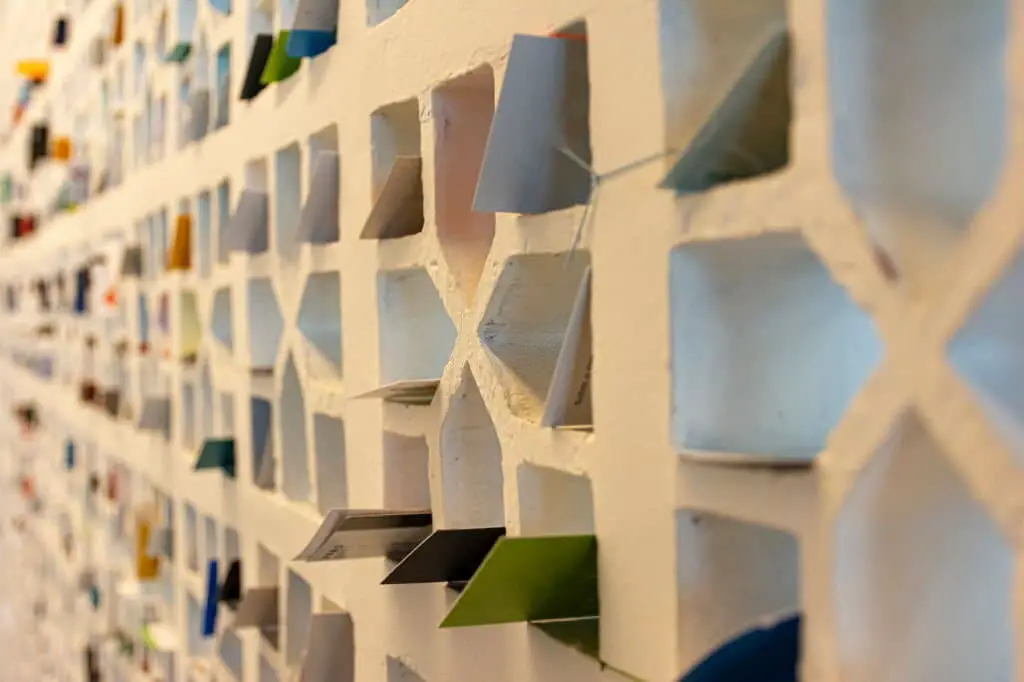
Hollow bricks are a type of masonry product that offers numerous benefits in construction projects. Their unique characteristic is the presence of void areas inside the brick, making them lighter and more thermally efficient compared to solid bricks. These bricks come in three main types: normal weight hollow bricks, lightweight hollow bricks, and sandwich hollow bricks.
Normal and lightweight hollow bricks are manufactured using a mixture of clay, sand, water, and an aerating agent, which is then molded into shape and fired in a kiln. Sandwich hollow bricks, on the other hand, consist of two layers of brick separated by an insulation material, typically styrofoam. Hollow bricks are versatile and can be used in various applications, including load-bearing walls, non-load bearing partitions, facades, and curtain walls.
Their benefits make them an excellent choice for construction projects. When it comes to the pros and cons of hollow bricks, one significant advantage is that they are lighter than solid bricks, making them easier to transport and handle. Additionally, they are less expensive to produce, which can lead to cost savings in a project. Hollow bricks also exhibit higher thermal conductivity, allowing them to regulate indoor temperatures effectively. However, there are some drawbacks to consider.
Hollow bricks may not be as strong as solid bricks and require proper support to prevent collapse. They are also more prone to moisture damage, which can cause cracking or degradation over time. Nevertheless, the benefits of hollow bricks make them a popular choice for many construction projects.
Other walls
Brick Walls.
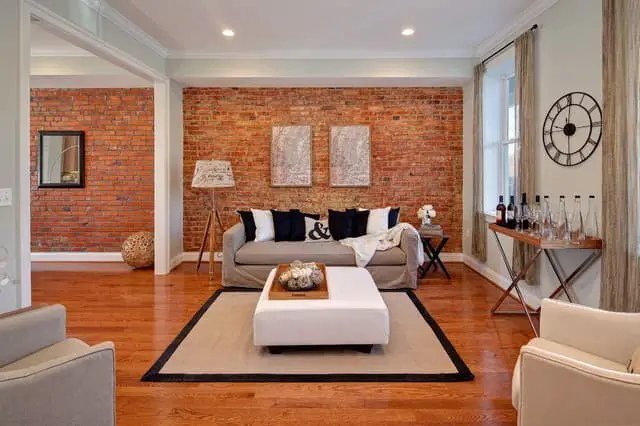
In the world of construction, a brick wall refers to a structural element composed of bricks, stones, or concrete. Its primary function is to bear the weight of the structure above it, serving as both a functional and decorative feature in various architectural styles. Brick walls can be found in a wide range of buildings, from residential properties to commercial structures.
There are two main categories: load-bearing walls, which provide structural support, and non-load-bearing walls, which do not carry any weight.
When it comes to deciding whether a brick wall is suitable for your home, it’s essential to weigh the pros and cons. On the plus side, brick walls are incredibly durable, withstanding the test of time for many years. They also require minimal maintenance, making them an attractive option for homeowners seeking low-maintenance solutions.
However, there are some drawbacks to consider. Brick walls can be costly to install, which may be a significant factor in your decision-making process. Furthermore, if damaged, brick walls can be challenging to repair, adding another layer of complexity to their maintenance.
Boundary Wall.
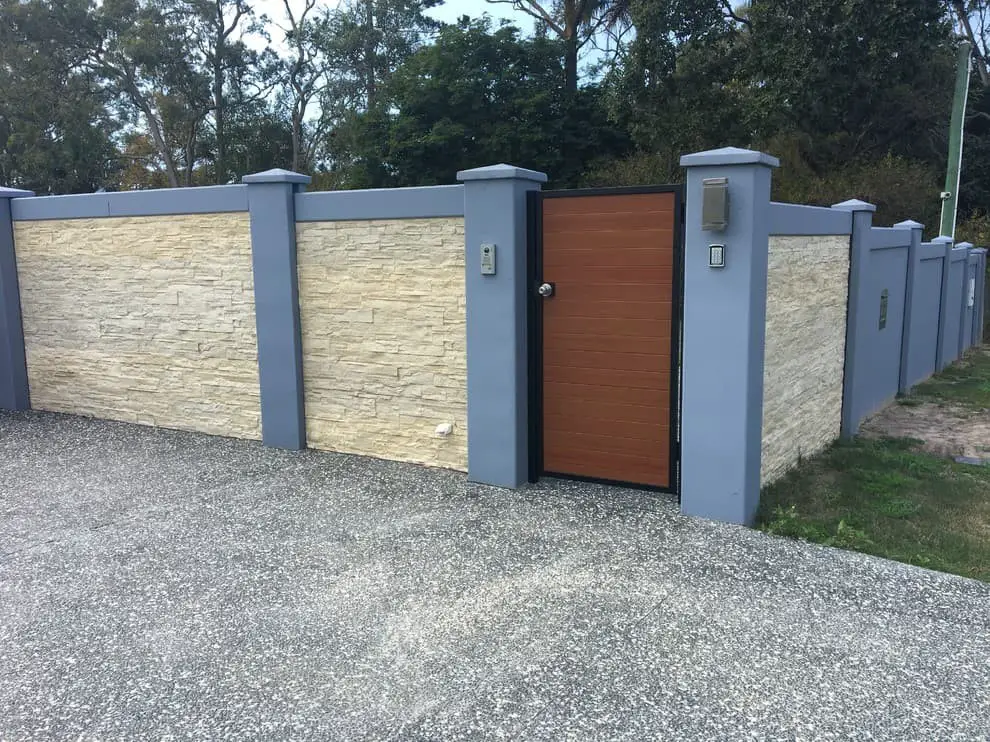
A well-designed boundary wall plays a vital role in defining our living spaces and safeguarding us from the outside world. Its significance lies not only in its functional purpose but also in its aesthetic appeal. Boundary walls can be constructed using a diverse range of materials, including brick, stone, concrete, metal, or wood, each offering distinct benefits and drawbacks.
In addition to being a standalone structure, a boundary wall can often incorporate a fence on top, adding an extra layer of security and visual appeal. The choice of material depends on various factors such as cost, durability, appearance, and maintenance requirements. When it comes to personalizing our boundary walls, the possibilities are endless. We can opt for a simple yet effective design or go all out with intricate patterns.
Creative options include painting, wallpapering, tiling, or even incorporating plants into the design – giving homeowners the freedom to express their unique style. Despite its many benefits, every decision has its pros and cons. The advantages of boundary walls are clear, including enhanced privacy, security, and increased property value.
However, there are also potential drawbacks to consider, such as installation and maintenance costs, as well as the possibility of damage to neighboring properties. It’s essential to research local regulations before building a boundary wall, as permits may be required. Furthermore, excavation on adjacent properties can sometimes lead to disputes with neighbors.
Cavity Walls.
Cavity wall construction involves filling the space between two walls with a material possessing excellent insulating properties. This type of wall offers numerous benefits, including enhanced energy efficiency and reduced noise levels. Interestingly, cavity wall technology isn’t limited to new constructions; many existing buildings can be retrofitted by adding an inner wall. If you’re considering incorporating cavity walls into your home, there are key factors to keep in mind.
Firstly, the wall thickness should ideally measure at least 12 inches (30 cm). Secondly, the cavity must be filled with a high-quality insulating material such as fiberglass or cellulose. Lastly, the inner wall ought to be constructed from a moisture-resistant material like concrete or brick. In terms of pros and cons, cavity walls have been a staple in construction for centuries.
Their advantages include exceptional strength, allowing them to support significant weight loads, as well as excellent insulation against temperature fluctuations. However, there are also some drawbacks to consider. For instance, damaged cavity walls can be challenging to repair, while their installation may require a significant upfront investment.
Cinder block wall.
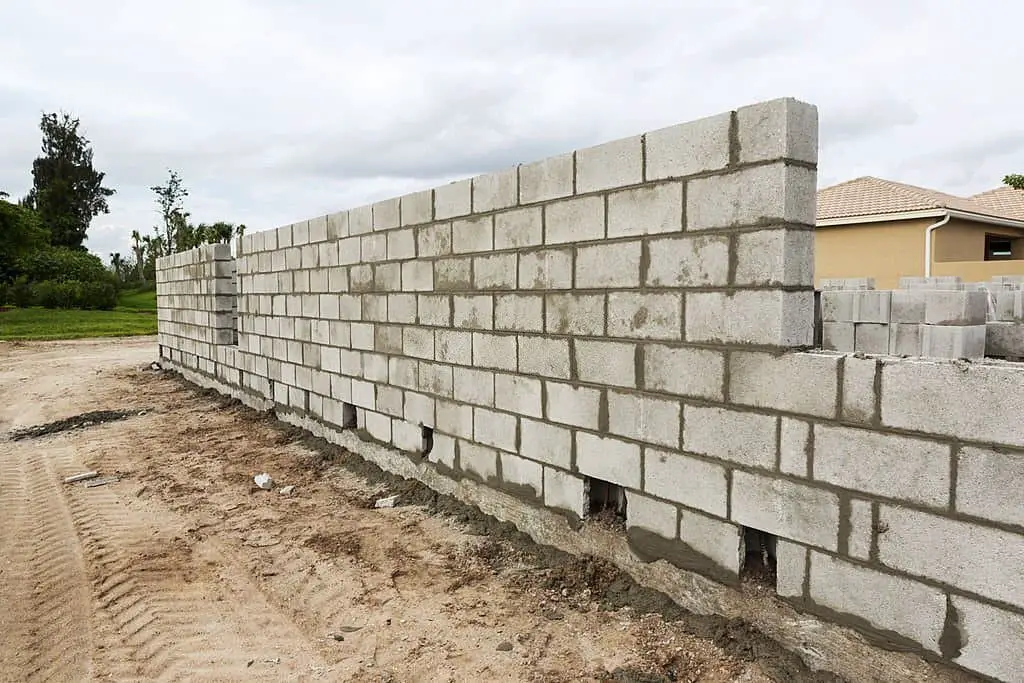
Cinder block walls are a type of masonry wall made from concrete blocks, comprising a mixture of Portland cement, sand, and water. These load-bearing structures are capable of supporting various loads, including the weight of a building, making them a popular choice for both commercial and residential applications. With their durability, strength, and low maintenance requirements, cinder block walls are often used as foundation walls, basement walls, exterior walls, and even interior partitions.
While cinder block walls have many benefits, there are also some potential drawbacks to consider. On the one hand, they can be susceptible to cracking and breaking over time if not installed correctly. Additionally, repairs can be challenging if damage does occur. On the other hand, their fire-resistance properties make them a valuable asset in protecting homes from fires.
In weighing the pros and cons of cinder block walls, it’s essential to consider factors such as installation quality, maintenance requirements, and potential repair costs.
Core wall.
Core walls are the unsung heroes of building construction, providing structural support and load-bearing capacity. Without them, buildings would collapse under their own weight. Made from materials like concrete, bricks, or stone, the thickness of a core wall depends on the height of the structure – taller buildings require thicker walls to ensure stability. While core walls are essential for maintaining a building’s integrity, they also come with some drawbacks.
On the plus side, they offer impressive strength and weight-bearing capabilities. However, their construction can be costly and may not prioritize aesthetics, which could impact the overall visual appeal of the building.
Faced Walls.
Faced walls are a common feature in residential and commercial buildings, characterized by the application of materials such as stone, bricks, wood paneling, or wallpaper. This type of wall can be load-bearing or non-load-bearing, with the latter serving purely aesthetic purposes. Faced walls often serve to create a specific ambiance or atmosphere within a space, with different materials offering unique effects.
For instance, a stone-faced wall can evoke a rustic feel, while wood paneling can impart a traditional charm. One of the primary uses of faced walls is to conceal imperfections or unsightly features in existing structures. This can be particularly useful when dealing with damaged drywall or other cosmetic issues. However, faced walls can also have drawbacks, such as limiting the sense of openness and airiness that a room might otherwise possess.
Conversely, they can provide enhanced privacy and create defined spaces within a larger area.
Glass wall.
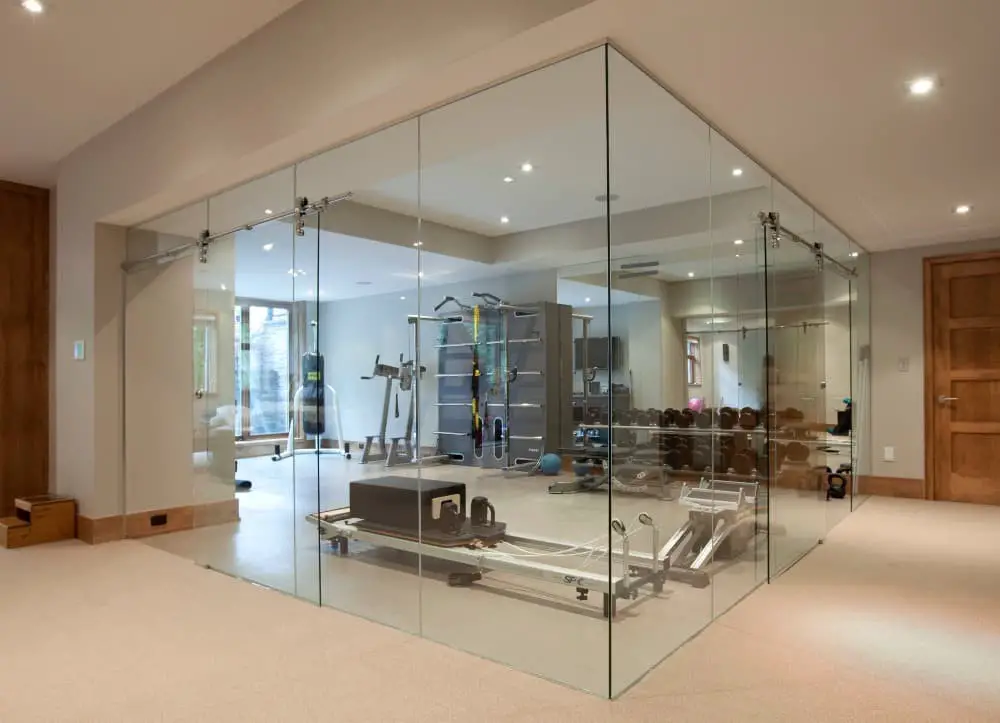
A glass wall is a versatile partitioning solution that seamlessly divides two areas or rooms, while allowing for an abundance of natural light to illuminate the space. Its transparency, translucency, or opacity can be tailored to suit specific design requirements. This beautiful and functional feature is suitable for both residential and commercial settings, effortlessly creating a sense of separation while permitting the warmth of daylight to flood the room.
Panel Walls.
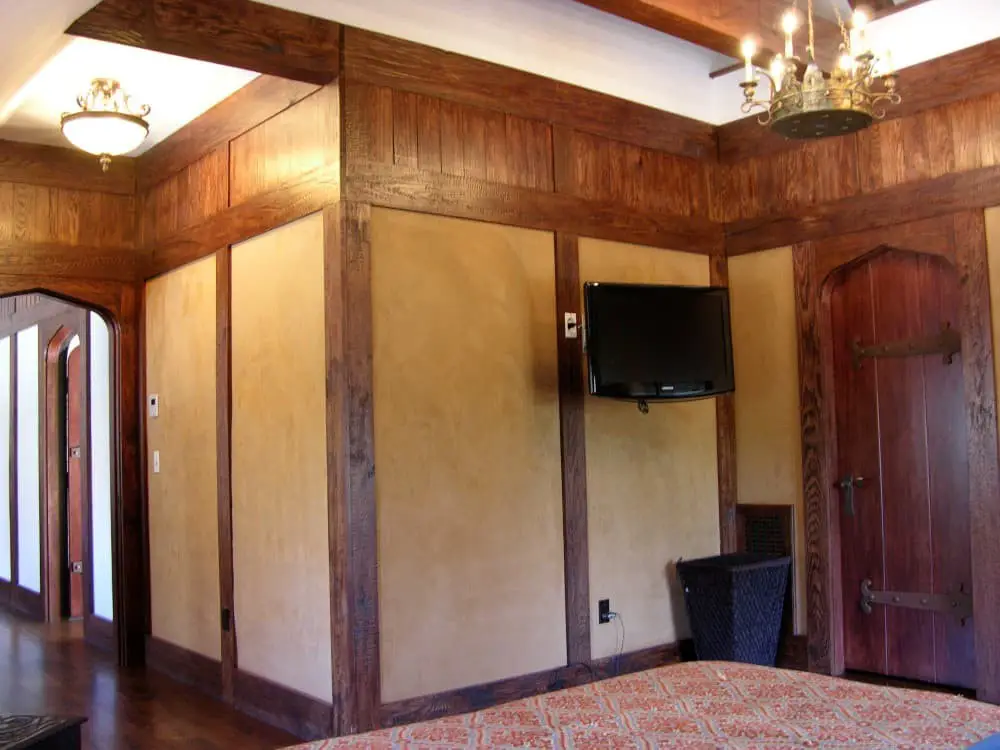
Panel walls are a construction technique where panels are attached to a frame to create a wall. This approach is often used for temporary structures like exhibition halls or convention centers. It’s also commonly employed as partitions in office spaces. The versatility of panel walls lies in the variety of materials they can be made from, including wood, metal, and glass. The most prevalent type of panel wall is the wood-framed variant, comprising panels attached to a wooden frame.
Metal-framed walls are another common occurrence, featuring metal frames that support the panels. While glass panel walls are less frequent, they do appear in some office settings. To ensure the integrity of a panel wall, it’s crucial to securely attach the panels to the frame and guarantee that the frame is robust enough to bear the weight of the panels. If the frame is inadequate, the entire structure risks collapsing.
Parapet Wall.
Parapet walls, also known as extension roofs, are structures that protrude from the main roof of a building. While their original purpose was to provide defense against enemy attacks, they have evolved to serve various purposes in modern architecture. These walls can be found in both commercial and industrial settings, serving as barriers for privacy or safety. The design and material used for parapet walls vary, with masonry being the most common choice.
This type of wall is constructed using bricks, stones, or a combination of both, often seen in office buildings, hotels, and other commercial structures. In contrast, metal parapet walls are typically made from steel or aluminum and are commonly used in industrial settings like factories and warehouses. A more modern approach to parapet design involves the use of glass, also known as glazed parapet walls. This material is often employed in office buildings to create an open, airy feel.
The benefits of incorporating parapet walls into a building’s architecture include enhanced privacy, protection from accidental falls or unauthorized access, and aesthetic appeal. Additionally, these structures can be used to display company logos or slogans, making them a valuable marketing tool.
Partition Walls.
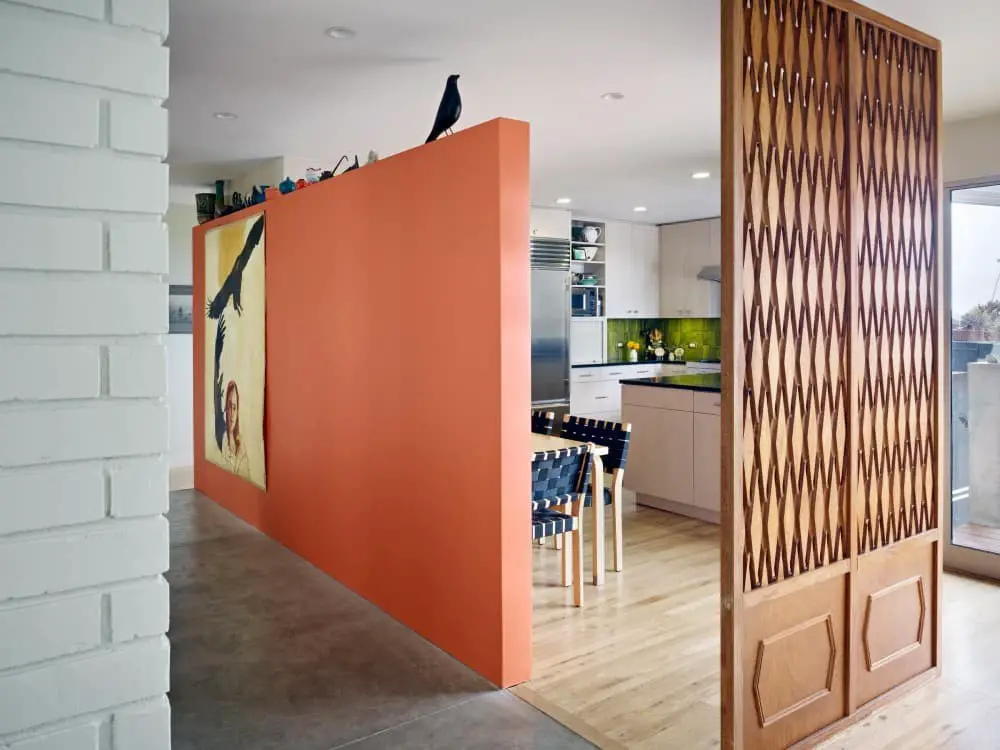
Partition walls, a type of wall commonly used to divide a room or area into distinct sections, offer numerous advantages when implemented in office settings. Typically constructed from materials such as wood, gypsum board, plasterboard, metal, or glass, these partitions can be either temporary or permanent fixtures. In the context of offices, partition walls are often employed to create private offices or cubicles, providing employees with a sense of separation and autonomy.
One of the primary benefits of incorporating partition walls into office design is their ability to mitigate noise levels. By creating physical barriers between workspaces, partition walls can help to reduce distractions and promote a more focused work environment. Additionally, these partitions can increase privacy, allowing individuals to conduct meetings or work on sensitive projects without fear of being overheard.
Furthermore, the creation of separate areas can foster a sense of community among colleagues, as defined spaces can encourage collaboration and teamwork. Ultimately, partition walls have the potential to boost productivity and overall job satisfaction in office settings.
Plywood Wall.
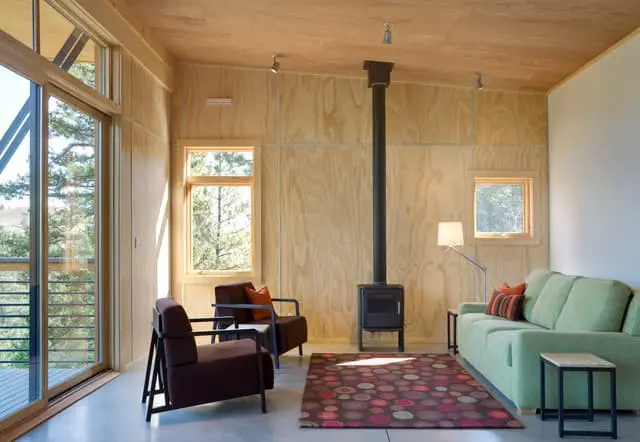
Plywood walls have taken center stage in modern home decor, offering a unique blend of rustic charm and sleek sophistication. If you’re considering incorporating this trend into your own space, here are some essential guidelines to keep in mind.
Firstly, it’s crucial to select the appropriate type of plywood for your project. With various options available, be sure to choose one that suits your specific needs.
Next, ensure the plywood is thoroughly sealed before commencing with painting or staining. This will help protect the material and preserve its natural beauty.
Once installed, you can further customize your plywood wall by applying a coat of paint or stain that harmonizes with your home’s overall aesthetic.
Reinforced Brick Wall.
A reinforced brick wall combines the strength of traditional bricklaying with the added support of steel rods or wires embedded within the mortar. This type of construction is particularly well-suited for seismically active regions, as it can withstand intense shaking without compromising its structural integrity. The reinforcing material used in a reinforced brick wall can take the form of either steel rebar or concrete, with steel rebar being the most commonly employed option.
Steel rebar provides the necessary tensile strength to counterbalance the compressive forces generated by the bricks and mortar. Concrete reinforcement is also possible, although it is less frequently utilized. The key to a successful reinforced brick wall lies in its ability to resist both compressive and tensile forces. The bricks and mortar contribute their share of compressive strength, while the steel reinforcement provides the necessary tensile strength.
This synergistic relationship makes reinforced brick walls one of the most robust forms of construction available. When building such a structure, it is essential to employ high-quality materials throughout, including fired clay bricks and a strong cement-based mortar. The steel reinforcement must also be properly installed and secured to ensure that it remains intact during seismic events.
Rubble Stone Masonry Wall.
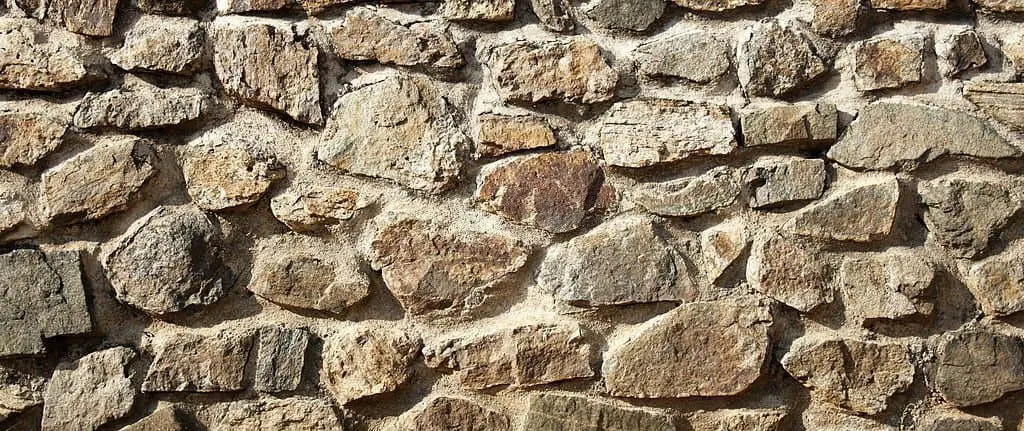
Rubble stone masonry walls, comprising irregularly shaped stones with varying sizes, are a timeless and popular choice for building structures. Unlike traditional masonry methods that rely on mortar, rubble stone masonry walls are constructed without the use of binding agents. This ancient technique has been employed in the construction of houses, buildings, and other features such as retaining walls, garden walls, and more.
The benefits of rubble stone masonry walls are numerous.
One of the most significant advantages is its exceptional strength and durability, allowing it to withstand the test of time – with proper maintenance, these walls can last for centuries. Additionally, they possess remarkable resilience in the face of natural disasters like earthquakes, making them an attractive choice for those seeking a structurally sound solution.
Beyond its practical benefits, rubble stone masonry walls also offer a unique aesthetic appeal.
The irregular shapes and varying textures of the stones create a visually striking feature that can add character and charm to any building or home.
Shear Walls.
Shear walls are a crucial structural element designed to resist lateral loads, which are forces acting perpendicular to the plane of the wall. These loads can arise from wind or seismic activity. The typical composition of a shear wall involves two plates connected by vertical elements, known as studs. The studs provide resistance against shear forces, while the plates transfer compression and tension forces between the studs.
Shear walls are commonly used in wood-frame construction but can also be constructed using concrete, masonry, or steel. In wood-frame applications, the panels typically consist of plywood or oriented strand board (OSB) nailed or screwed to the studs. The panels function as a diaphragm, transferring lateral loads to the studs.
Concrete and masonry shear walls often incorporate steel rebar or mesh for added reinforcement.
The concrete or masonry is poured around the reinforcement, providing resistance against both tension and compression forces. Steel shear walls are comprised of interconnected steel plates and framing members. The plates resist tension and compression forces, while the framing members resist shear forces.
Shear walls play a vital role in a building’s lateral load-resisting system. They are most effective when combined with other elements such as diaphragms and braced frames.
On the plus side, shear walls can provide exceptional strength, enabling buildings to withstand high wind speeds and seismic activity. They also offer the potential for creating large, open spaces within a building. However, there are some drawbacks to consider. Shear walls can be expensive to construct and may require specialized reinforcement at their base. Furthermore, they can impart a ‘boxy’ appearance on the exterior of a building.
Steel Sheet Wall.
Steel sheet walls, a type of metal wall construction, consist of interconnected steel sheets welded or bolted together. This versatile material is widely applied in various sectors, including industrial, commercial, and residential buildings. The benefits of employing steel sheet walls include their inherent fireproof properties, exceptional durability, and low maintenance requirements. Moreover, they are an eco-friendly option as they can be recycled at the end of their lifespan.
While offering numerous advantages, steel sheet walls also present some drawbacks. One major limitation is their relatively high cost, which may deter some developers. Additionally, installation processes can be challenging, requiring specialized expertise and equipment.
Veneered Walls.
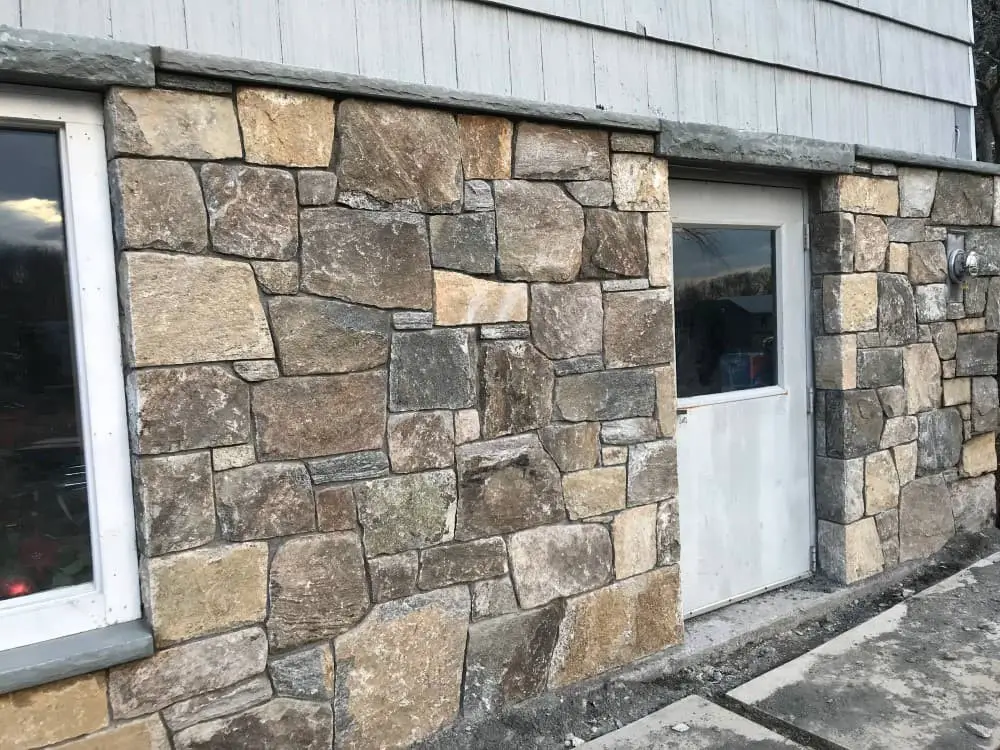
Veneered walls are a luxurious option that combines the natural beauty of wood with the durability of a solid wall. Typically found in high-end homes, office buildings, and hotels, these walls exude sophistication and refinement. The construction process involves attaching thin sheets of wood veneer to the surface of the wall, where veneer is a thinly sliced layer of wood peeled from a log. A range of woods, including cherry, maple, oak, and walnut, are available for this type of wall.
While veneered walls have their drawbacks, they also offer several benefits. For instance, they can be easily cleaned and maintained due to their smooth surface, making them ideal for painting or wallpapering. However, one potential drawback is that veneered walls may be thinner and more delicate than other types of walls, which could impact their insulating properties.
Wood Wall.
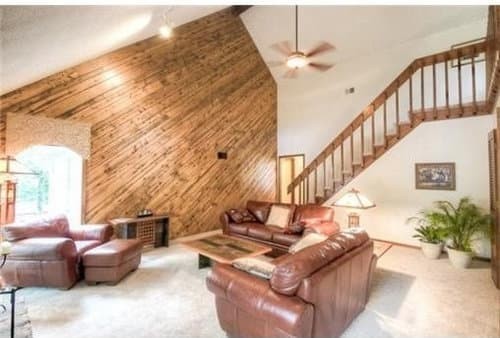
The wood wall’s smooth texture and rustic charm make it a stunning addition to any room, commanding attention and adding character. Its versatility allows for a wide range of styles, from modern and polished to reclaimed and distressed. If you’re seeking a unique feature that sets your space apart, the wood wall is an excellent choice. While wood walls bring numerous benefits, they also come with some drawbacks.
On the plus side, they can create a cozy atmosphere by visually warming up a room, making it perfect for media rooms or play areas where sound absorption is crucial. Additionally, wood walls offer a unique opportunity to add interest and personality to your space, whether you opt for a rustic or refined look. On the downside, wood walls can be costly due to material and labor expenses.
Moreover, they require regular upkeep to maintain their appearance, involving dusting and refinishing to keep them looking their best.
Conclusion
Walls come in all shapes and sizes, each serving a distinct function. Some serve as barriers, keeping unwanted elements at bay, while others provide containment, safeguarding what’s within. Then there are those that add aesthetic value or bear structural weight. Regardless of their purpose, walls play a vital role in our daily lives, forming an integral part of the world we inhabit.
Related Posts
When it comes to designing a harmonious space, the colors you choose for your ceiling and walls can make all the difference. For instance, if you have alabaster walls, finding the right ceiling color is crucial. A subtle yet striking combination would be to pair these creamy walls with a calming shade that complements their softness. On the other hand, if you’re working with grey floors, selecting wall colors that create visual cohesion is essential.
In this context, earthy tones or muted hues can help bring balance and serenity to your space. Moreover, when it comes to yellow walls, choosing curtains that enhance their warmth without overpowering them is key. Elsewhere, the effectiveness of spray foam insulation in strengthening your walls warrants exploration, as does the creative process of crafting an ombre accent wall using temporary wallpaper.
Ultimately, mastering drywall techniques and DIY skills can elevate your space’s overall aesthetic and functionality.

